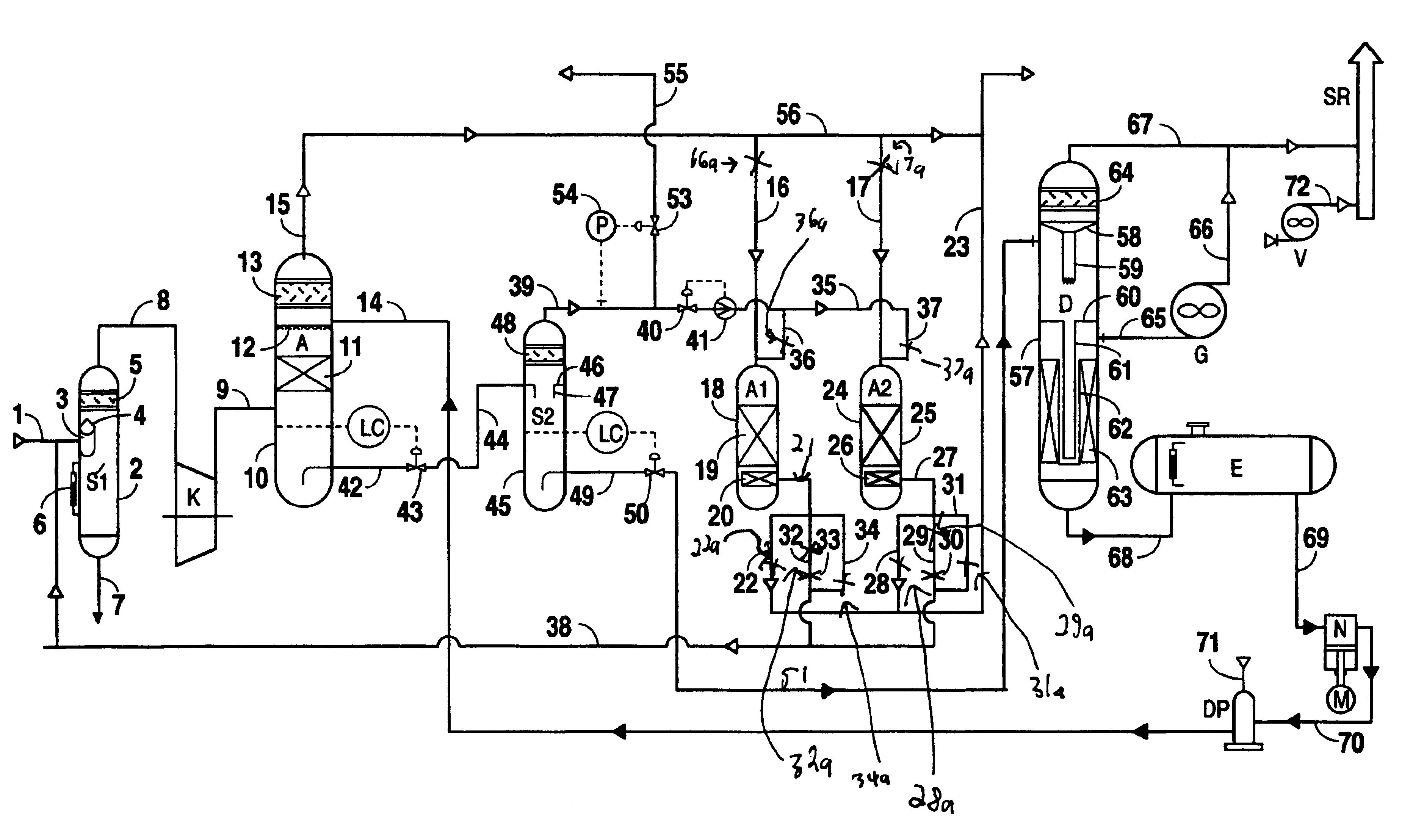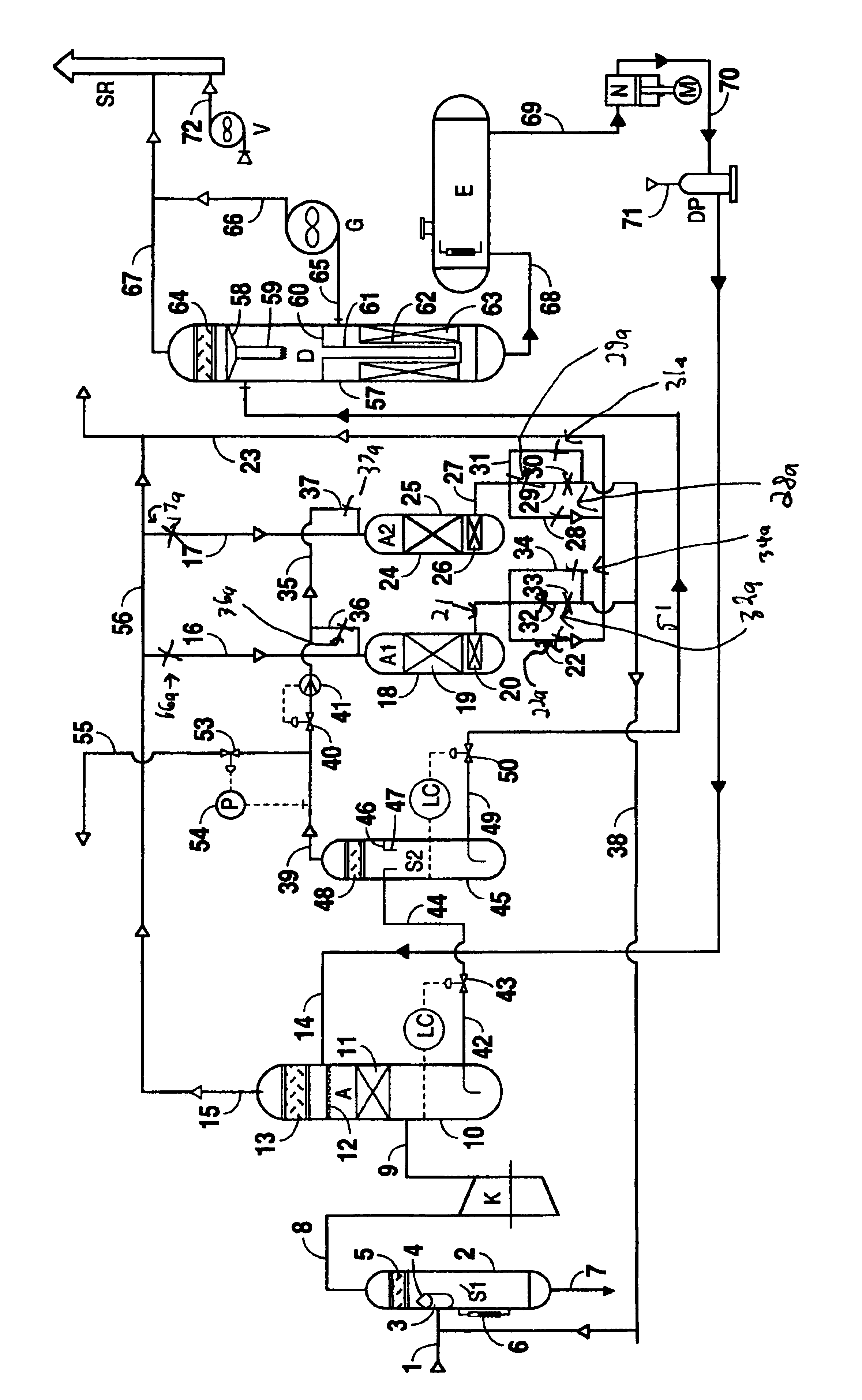CO2 separator method and apparatus
a separator and co2 technology, applied in the field of methane and carbon dioxide separation and recovery, can solve the problems of difficult economic recovery of chemically inert organic solvents, difficult economic recovery of uniform processing and/or equipment, and special complex tasks, so as to increase the operating efficiency of the system and reduce the loss of methane
- Summary
- Abstract
- Description
- Claims
- Application Information
AI Technical Summary
Benefits of technology
Problems solved by technology
Method used
Image
Examples
Embodiment Construction
[0039]The purification process of the invention is designed to work with excessive landfill methane gas output compared to its extraction from a landfill. Vacuum is not used in the supplying pipeline because any entry of air should be avoided. Landfill methane gas output from landfills may vary considerably depending on season, day and night, rains, cold etc.
[0040]On closed landfills the landfill methane gas may flow from wells to a collector at the quantity of as much as 300 m3 / hour (10595 feet3 / hour) and more, depending on the volume of a landfill, year of usage, time of the year, day or night, weather conditions and other. The gas in the collectors is usually burned by flaring.
[0041]As shown in FIG. 1, the gas flows from a collector through a pipeline 1 to a separator S1. The separator S1 comprises a cylindrical body 2 with elliptic end caps. The separator S1 includes a shaped partition 3 with a lid 4, and a filter element 5 inside the separator.
[0042]The gas flowing in the pipel...
PUM
| Property | Measurement | Unit |
|---|---|---|
| pressure | aaaaa | aaaaa |
| temperatures | aaaaa | aaaaa |
| pressure | aaaaa | aaaaa |
Abstract
Description
Claims
Application Information
 Login to View More
Login to View More - R&D
- Intellectual Property
- Life Sciences
- Materials
- Tech Scout
- Unparalleled Data Quality
- Higher Quality Content
- 60% Fewer Hallucinations
Browse by: Latest US Patents, China's latest patents, Technical Efficacy Thesaurus, Application Domain, Technology Topic, Popular Technical Reports.
© 2025 PatSnap. All rights reserved.Legal|Privacy policy|Modern Slavery Act Transparency Statement|Sitemap|About US| Contact US: help@patsnap.com


